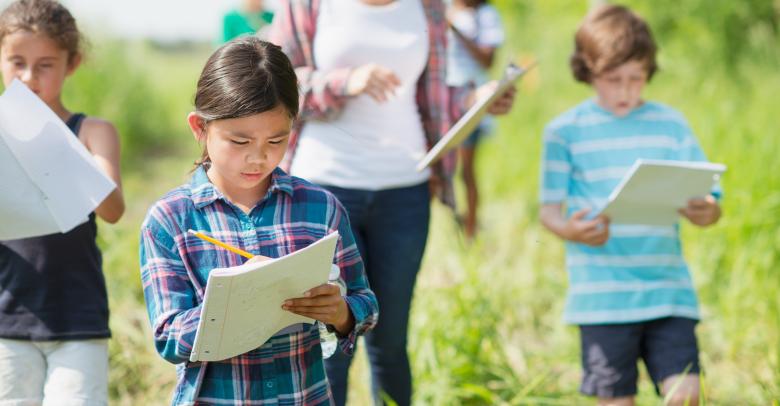Reading is composed of two primary elements: decoding words and listening comprehension. Decoding helps students make sense of words on a page—students see the images (or letters), and those images are transmitted to the brain and transformed into language. While decoding is something that happens on a page, listening comprehension is the ability to make sense of the words we hear, and needs no written text to practice and develop.
In the typical classroom, literacy instruction is geared toward decoding. While this is certainly an important skill to teach students, it fails to account for the importance of listening as a fundamental language skill—moreover, as a crucial reading skill. Students are naturally primed to use listening instruction, and classrooms that make use of this innate readiness produce more skilled readers.
The Research
In their article “On the importance of listening comprehension,” special education and speech experts Tiffany P. Hogan, Suzanne M. Adlof, and Crystle N. Alonzo assess that decoding receives more attention in the classroom, and listening comprehension has fallen by the wayside. This is problematic, they point out, because there is considerable “evidence showing that listening comprehension becomes the dominating influence on reading comprehension starting even in the elementary grades.” By neglecting listening instruction in the classroom, students aren’t using their dominant method for gaining reading comprehension skills, ultimately doing students a disservice.
On top of that, listening comprehension becomes more important over time, even as students get better at reading, “Over time the contribution of listening comprehension to reading comprehension increases and as such the incidence of poor comprehenders also increases across the grades.” Students who don’t get enough practice with listening become poorer and poorer communicators in relation to their peers.
Studies show that students generally listen two to three grade levels above what they’re able to read, indicating that listening ought to be a primary tool in the introduction of increasingly challenging language, vocabulary, and topics. Why listening instruction isn’t used to greater effect today is not important; what is important is ensuring that teachers start leveraging its power as soon as possible.
The Solution
Listening comprehension as a literacy tool is not only useful in the general classroom, but also with struggling readers and students who have fallen behind. Both English Language Learners and students who struggle with reading and listening comprehension are frequently taught using literacy tools that are not rigorous enough—partially due to the reliance on decoding as the primary method of instruction.
Utilizing tools and programs that emphasize listening comprehension can help struggling students get on-level, and maintain the academic success of on-track students. Effective programs and tools should be used throughout a student’s academic career, and not just in the elementary grades.
EPS Instruction and Intervention offers Listenwise, which uses utilizes real-world podcasts to introduce more complex language, higher-level vocabulary, and cross-curricular topics to your middle and high school students. With the program, you can increase vocabulary and reading comprehension in your classroom, enhance your curriculum with a variety of stories that cover ELA, Science, Social Studies, and current events, and assess student listening comprehension.
To take a listen to the program yourself, or to see how Listenwise worked in real-life classrooms, visit the website.






Leave a Reply